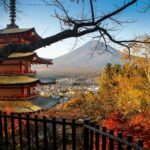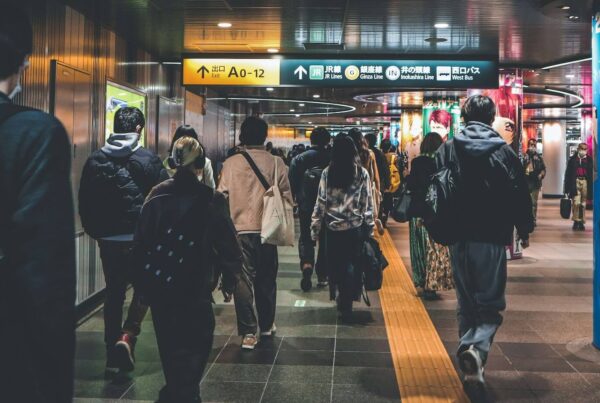Stretching from the Seto Inland Sea to the Sea of Japan, Hyōgo is a Japanese prefecture located in the Kansai region of Honshu. Conveniently based in the centre of Japan, it gives travellers easy access from everywhere by both air and ground.
Hyōgo Prefecture is a major economic centre, transportation hub, and tourist destination in western Japan, with 20% of the prefecture’s land area designated as Natural Parks. It is also part of the Keihanshin metropolitan area, the second-most-populated urban region in Japan after the Greater Tokyo area.
From World Cultural Heritage Sites to Western-style houses built early in the 1900s, Hyogo has various highlights for tourists to enjoy, and it’s no wonder why this prefecture is called a “microcosm of Japan”. Here are 10 of the best things to experience in Hyogo.
Table of Contents
Konotori no sato Park (Kinosaki)

Credit: japan-guide.com
Located 10 kilometers south of Kinosaki, Konotori no Sato Park is a museum and breeding habitat. The Park was built to reintroduce the storks to Japan using birds obtained from Russia, as the Oriental Stork (konotori) became extinct in Japan in 1971.
Visitors can learn about the storks, the breeding program and conservation, and the open-air cage—without a roof—allows visitors to enjoy watching captive storks from a close distance.
The storks themselves are now deemed a protected animal species by the government and have become a symbol of the Tajima region around Kinosaki, so much so that even the local airport is named after them (Konotori Tajima Airport).
Website: http://www.stork.u-hyogo.ac.jp/en/
Hours: 9:00 a.m.–5:00 p.m. (Closed on Mondays, unless it’s a national holiday)
Price: FREE
Kinosaki Onsen (Kinosaki)
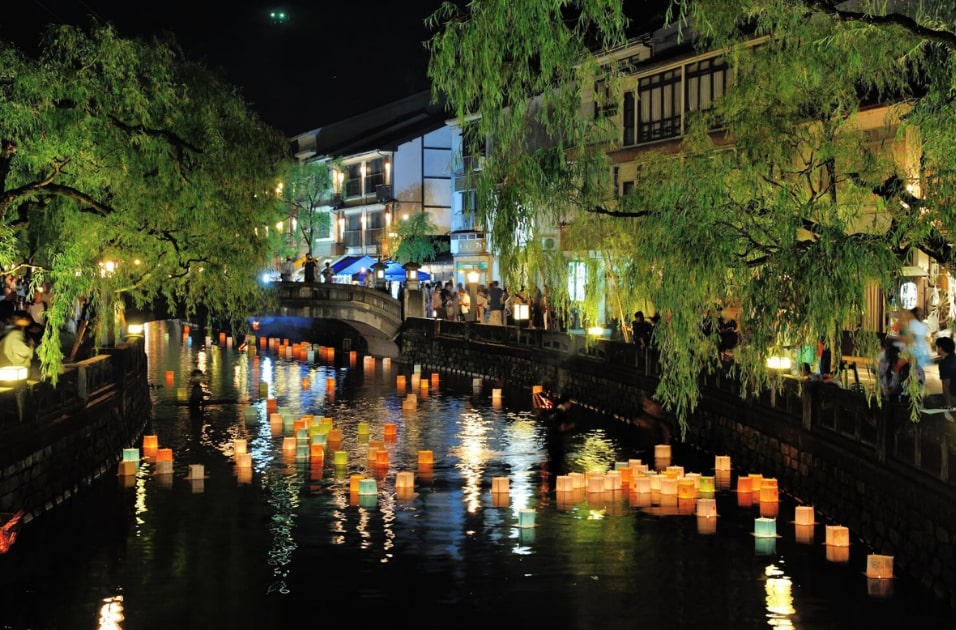
Credit: visitkinosaki.com
Kinosaki Onsen is located in northern Hyogo Prefecture on the coast of the Sea of Japan, and it’s one of the top onsen destinations of the Kansai Region.
Built along a willow-lined river, this historical town has seven different outdoor hot springs, each with unique features. Try soaking in the bathtub with the locals, you may be able to learn the inside story of Kinosaki. There’s plenty more to do around town, though. Visit Yosho Shrine, take the Ropeway and bask in the breathtaking view of the Kinosaki cityscape, and enjoy a delicious seafood dinner. If you are not tired yet, why not take a stroll along the Otani River wearing a traditional yukata?
Website: https://kinosaki-spa.gr.jp/
Himeji Castle (Himeji)

Credit: Wikimedia Commons
Himeji Castle—also known as White Heron Castle, and a highly popular cherry blossom spot in Spring—is considered Japan’s most spectacular castle for its imposing size and its well-preserved castle grounds. The castle complex is made up of over eighty buildings spread across multiple baileys, which are connected by a series of gates and winding paths.
Himeji Castle is one of UNESCO’s World Cultural Heritage Sites in Japan.
Website: https://www.himejicastle.jp/en/
Hours: 9:00 a.m.–5:00 p.m.
Price: Adults ¥1000 / Students ¥300
Learn more about Himeji Castle
Koko-en Garden (Himeji)

Credit: Wikimedia Commons
If you’ve visited Himeji Castle, you can’t miss Koko-en Garden, a popular sightseeing spot just a short walk from the castle’s main gate. Koko-en is composed of nine different types of gardens all based on the original layout of historical residences and passageways.
With its authentic Edo Period (1603-1868) buildings and landscaping, the garden is often used as a backdrop for period TV Dramas and movies—including Keishi Otomo’s popular franchise Rurouni Kenshin.
Website: https://www.himeji-machishin.jp/ryokka/kokoen/en/
Hours: 9:00 a.m.–5:00 p.m.
Price: Adults ¥310 / Students ¥150
Nijigen no Mori (Awaji)

Credit: Trip Advisor
Located on Awaji Island—in the middle of Awajishima Park—Nijigen no Mori is a theme park with attractions based on well-known Japanese anime and pop culture.
This Otaku paradise has four main attractions: a Crayon Shin-chan Adventure Park, a two-dimensional night-time experience called Phoenix, a Naruto and Boruto park—where you’ll also have the chance to dine at the iconic ramen shop Ramen Ichiraku—and Operation Godzilla Intercept, a Godzilla-themed attraction that features a zipline ride around—or through!—a life-size statue of the monster.
Website: https://nijigennomori.com/
Hours: Business hours vary depending on each attraction and season
Price: The Entrance Fee is free; however, each attraction has individual tickets for sale
Takeda Castle Ruins (Asago City)
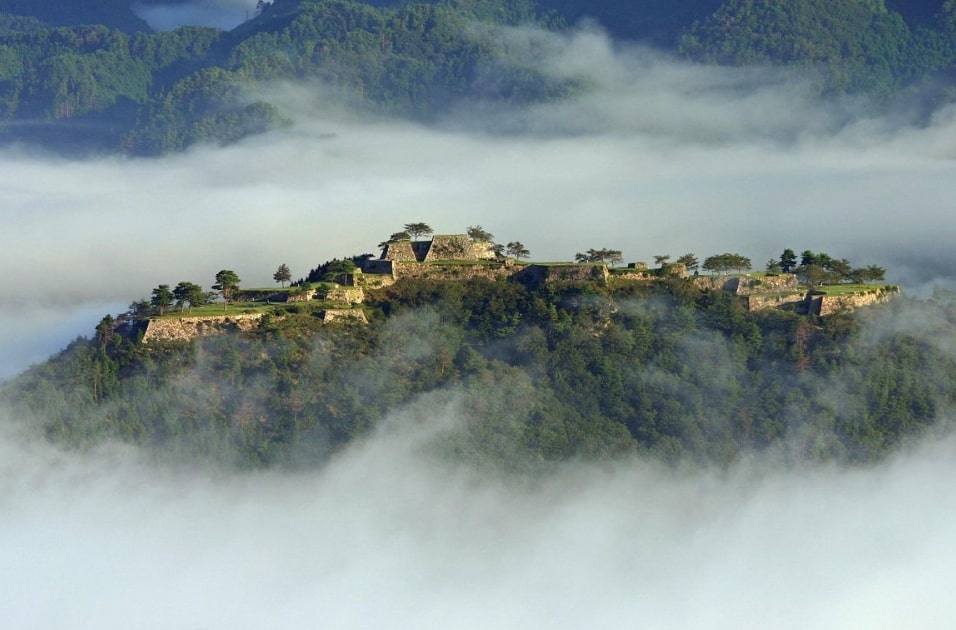
Credit: Trip Advisor
Takeda Castle is a ruined castle in Asago City, built on the summit of Mt. Kojo at an altitude of 353.7m. The scale of the territory is about 100 m from east to west and about 400 m from north to south, making it one of the largest “complete stone wall remains” in Japan.
You can have different viewing experiences depending on whether you view the castle from inside or outside.
The best time to visit this landmark is in Autumn, where you can enjoy the view of the castle ruins surrounded by a sea of clouds. Because of this spectacular view, Takeda Castle is known as ‘Castle in the Sky’.
Website: http://www.city.asago.hyogo.jp/takeda/
Hours: (Autumn) 4:00 a.m.–5:00 p.m. Each season has different opening times.
Price: Adults ¥500 / Students Free
Kobe Animal Kingdom – Kobe

Credit: Trip Advisor
Located on Port Island in Kobe, Animal Kingdom is an eco-friendly park where flowers, animals and people coexist. Featuring indoor and outdoor areas, adults and children have the chance to experience the park in many different forms. Get up close and personal with rare birds, immerse yourself in the Flower Shower, and take part in fun activities such as riding a camel or feeding penguins.
Don’t forget to stop by their AlpaCafé to get a taste of their popular animal-themed dishes!
Website: https://en.kobe-oukoku.com/
Hours: Weekdays 10:00 a.m.–4:00 p.m. / Weekends 10:00 a.m.–4:30 p.m.
Price: Adults ¥1800 / Children (Elementary School) ¥1000
Nada Sake District – Kobe

Credit: canva.com
If you want to combine business with pleasure, why not visit Kobe’s Nada area? Many sake breweries operate in this district, which stretches approximately three kilometres East to West and makes for a good half-day walk exploring its nice mix of older buildings and modern breweries.
By visiting the various Sake Museums and Breweries, travellers can learn about traditional brewing methods and the ingredients involved, as well as enjoy a little sake tasting.
Sorakuen Garden – Kobe

Credit: sorakuen.com
Another garden worth a visit is Sorakuen Garden, a secluded oasis in the middle of the city. This garden was originally created for the residence of the Kodera family, who contributed to Kobe’s development in the second half of the 19th century.
Those fascinated by architecture will undoubtedly admire the old structures found throughout the garden, including a houseboat originally used for pleasure cruises by the lord of Himeji.
Website: http://www.sorakuen.com/Index_en.html
Hours: 9:00 a.m.–5:00 p.m.
Price: Adults ¥300 / Children ¥150
Kobe Beef
Although this is not exactly a cultural spot, you can’t visit Hyogo Prefecture without having a taste of the famed Kobe beef. Valued for its flavour, tenderness, and well-marbled texture, this Japanese delicacy is considered the best-known type of wagyu outside of Japan.
One of the best ways to enjoy Kobe Beef is at a teppanyaki restaurant, where a chef grills the meat on an iron plate in front of their patrons.
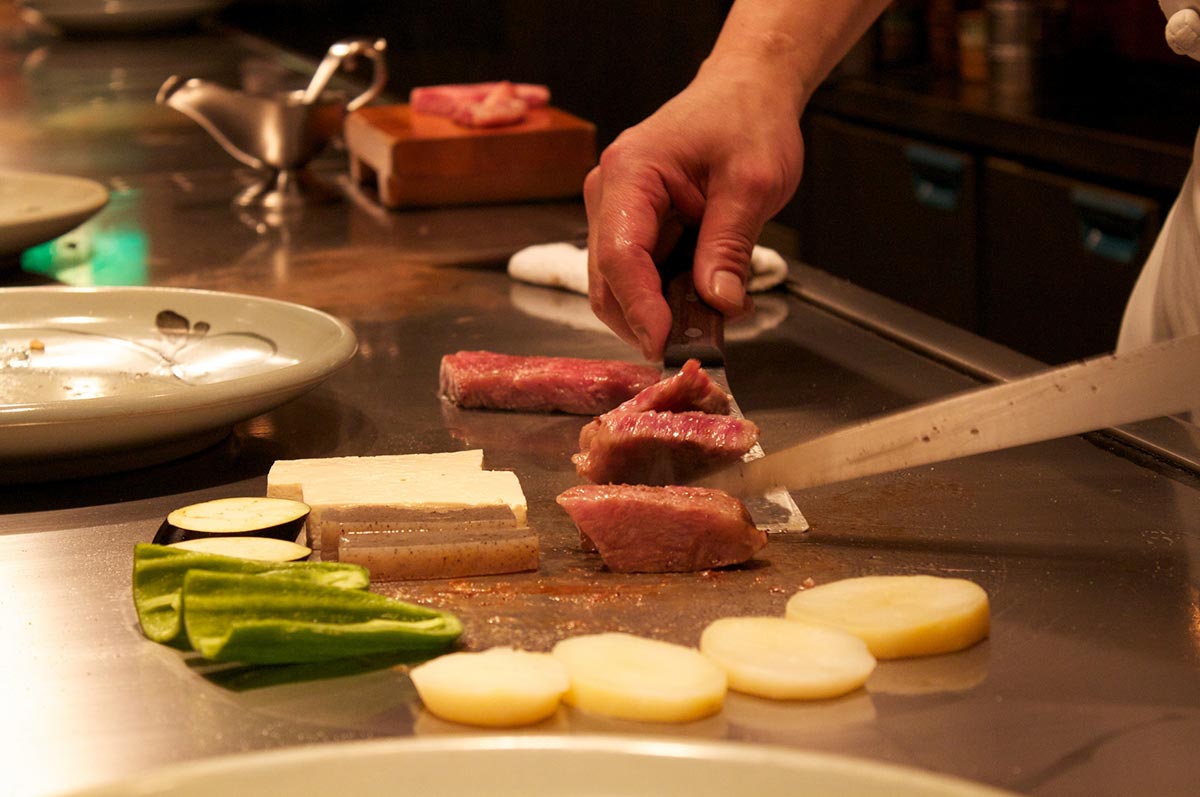
Credits: Jit Bag
Read also:
Unfortunately, we do not have any knowledge of when travel will officially resumes in Japan yet; however, make sure to put Hyogo Prefecture at the top of your travel list! With majestic castles, secluded gardens, and culinary delicacies, you’ll have the perfect trip planned in no time!
If you wish to discover more amazing places in Japan, don’t forget to follow us on Facebook, Instagram, Twitter, and Pinterest. Matane!

Francesca Poggi
Originally from Italy, Francesca spent the last twelve years in beautiful England and is now back in her home country, working hard to make her dream of moving to Japan a reality. She loves writing about Japanese culture and everything Japan has to offer. Among her big passions there’s tea—sometimes she even dreams of it! She is also currently self-studying Japanese. When she isn't busy writing or studying—or, you know, drinking tea—she can be found watching Asian TV dramas, or Japanese period (especially Edo and early Meiji) films. Her favourite is Rurouni Kenshin.


